Crime and punishment in the wildlife trade - WWF UK
Crime and punishment in the wildlife trade - WWF UK
Crime and punishment in the wildlife trade - WWF UK
Create successful ePaper yourself
Turn your PDF publications into a flip-book with our unique Google optimized e-Paper software.
1 Introduction<br />
The attitude of <strong>the</strong> <strong>UK</strong>’s legal system towards <strong>the</strong> ever-<strong>in</strong>creas<strong>in</strong>g illegal <strong>wildlife</strong> <strong>trade</strong><br />
is <strong>in</strong>consistent. It does not adequately reflect <strong>the</strong> nature <strong>and</strong> impact of <strong>the</strong> crime <strong>in</strong>volved, <strong>and</strong><br />
it is erratic <strong>in</strong> its response. This is because offences are frequently regarded as low priority (even<br />
though <strong>the</strong>y are on <strong>the</strong> <strong>in</strong>crease); because <strong>wildlife</strong> law enforcement is ad hoc; <strong>and</strong> because of <strong>the</strong><br />
often derisory penalties imposed upon <strong>the</strong> few <strong>wildlife</strong> offenders who are brought to justice.<br />
It is aga<strong>in</strong>st this backdrop that <strong>the</strong> <strong>UK</strong>’s enforcement agencies – <strong>the</strong> police <strong>and</strong> HM Customs<br />
<strong>and</strong> Excise (HM C&E) – have secured year on year <strong>in</strong>creases <strong>in</strong> <strong>the</strong>ir detection <strong>and</strong> seizure<br />
rates. Customs officers <strong>and</strong> police <strong>wildlife</strong> liaison officers form <strong>the</strong> front l<strong>in</strong>e <strong>in</strong> <strong>the</strong> fight aga<strong>in</strong>st<br />
<strong>the</strong> illegal <strong>trade</strong>. Resources are allocated accord<strong>in</strong>g to enforcement priorities which may or may<br />
not be underp<strong>in</strong>ned by performance targets: it is not surpris<strong>in</strong>g that <strong>wildlife</strong> <strong>trade</strong> offences are<br />
relegated <strong>in</strong> terms of importance. Fur<strong>the</strong>r, <strong>the</strong> attitude of judges <strong>and</strong> magistrates to such offences<br />
seems, with <strong>the</strong> odd exception, to be out of step with <strong>the</strong> determ<strong>in</strong>ed efforts of <strong>the</strong> enforc<strong>in</strong>g<br />
authorities <strong>and</strong> those develop<strong>in</strong>g policy responses.<br />
There are, however, some positive signs of change. These may be shaped by <strong>in</strong>ternational laws,<br />
<strong>in</strong>creased political lobby<strong>in</strong>g around environmental, susta<strong>in</strong>able development <strong>and</strong> biodiversity<br />
issues, <strong>and</strong> a grow<strong>in</strong>g public awareness brought about by <strong>the</strong> work of non-government<br />
organisations (NGOs) <strong>and</strong> government policy-makers. Even so, much rema<strong>in</strong>s to be done to<br />
protect <strong>the</strong> most endangered species <strong>and</strong> those at risk from <strong>the</strong> illicit <strong>in</strong>ternational <strong>wildlife</strong> <strong>trade</strong>.<br />
Whe<strong>the</strong>r undertaken for profit, collection or obsession, this illegal <strong>trade</strong> has a serious effect on<br />
biodiversity, <strong>the</strong> survival of species <strong>and</strong> <strong>the</strong> protection of habitat. It is particularly important that<br />
developed countries take effective <strong>and</strong> rigorous legislative action to combat <strong>the</strong> <strong>trade</strong>, because<br />
<strong>the</strong>y provide <strong>the</strong> ma<strong>in</strong>stay of <strong>the</strong> markets that susta<strong>in</strong> most legal <strong>and</strong> illegal <strong>trade</strong> <strong>in</strong> <strong>wildlife</strong>.<br />
Although <strong>the</strong>re are no substantiated estimates of <strong>the</strong> market, <strong>and</strong> little hard evidence of <strong>the</strong><br />
extent of <strong>the</strong> illegal <strong>wildlife</strong> <strong>trade</strong>, it is hugely significant <strong>in</strong> terms of f<strong>in</strong>ancial ga<strong>in</strong> <strong>and</strong> its<br />
impact upon <strong>the</strong> world’s <strong>in</strong>creas<strong>in</strong>gly pressured <strong>wildlife</strong>. It has been suggested that <strong>the</strong> value of<br />
illegal <strong>trade</strong> represents nearly a quarter of <strong>the</strong> total worldwide <strong>trade</strong> <strong>in</strong> <strong>wildlife</strong>, <strong>and</strong> is reported<br />
to come second only to <strong>the</strong> illegal drugs <strong>trade</strong> <strong>in</strong> terms of its monetary value 2 .<br />
The problems faced <strong>in</strong> tackl<strong>in</strong>g such an enormous illegal <strong>trade</strong> are compounded by <strong>the</strong> fact that,<br />
unlike many o<strong>the</strong>r illegally-<strong>trade</strong>d commodities, a large legitimate <strong>trade</strong> <strong>in</strong> <strong>wildlife</strong> runs <strong>in</strong><br />
parallel. In situations such as <strong>the</strong> CITES COP 10 3 agreement to sell a limited stock of ivory to<br />
Japan, concerns have been raised about <strong>in</strong>creases <strong>in</strong> elephant poach<strong>in</strong>g 4 . Some fear <strong>the</strong> growth<br />
of an illegal parallel <strong>trade</strong>, 5 argu<strong>in</strong>g that it will always piggy-back on a legal one. There are clear<br />
examples of this parallel <strong>trade</strong>, not least <strong>in</strong> bird breed<strong>in</strong>g circles, where notorious cases of illegal<br />
<strong>wildlife</strong> trad<strong>in</strong>g have <strong>in</strong>volved established bird breeders hold<strong>in</strong>g licences for <strong>the</strong> legal <strong>trade</strong> 6 .<br />
2<br />
Ong, DM, The Convention on International <strong>trade</strong> <strong>in</strong> Endangered Species (CITES 1973): implications of recent<br />
developments <strong>in</strong> <strong>in</strong>ternational <strong>and</strong> EC law (1998) Journal of Environmental Law, 10(2).<br />
3 Convention on <strong>the</strong> International Trade <strong>in</strong> Endangered Species, Conference of <strong>the</strong> Parties 10<br />
4 Favre, D (2000): CITES Round-up. Yearbook of International Environmental Law 11. Oxford: OUP. p303.<br />
5 Mat<strong>the</strong>ws, P (1996): Problems Related to <strong>the</strong> Convention on <strong>the</strong> International Trade <strong>in</strong> Endangered Species.<br />
International <strong>and</strong> Comparative Law Quarterly, 45, p421.<br />
6 Harold Sissen, Robert Brastock <strong>and</strong> (<strong>in</strong> <strong>the</strong> US) Tony Silva. For more details see Case Studies, Annex 1.<br />
9


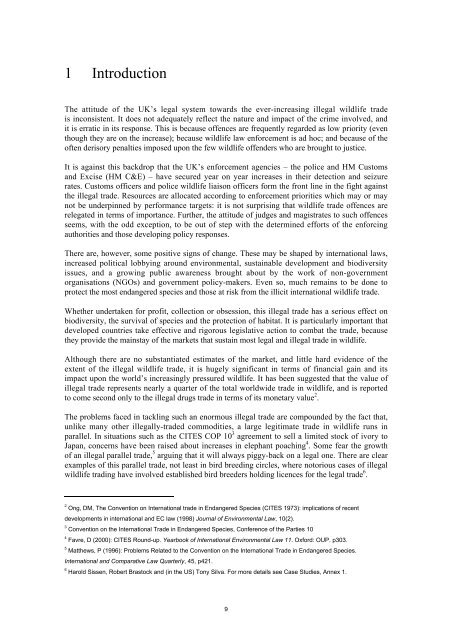
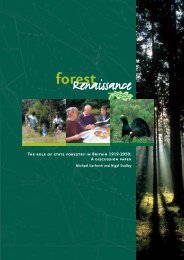
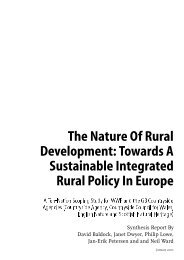
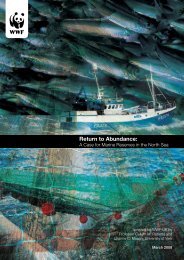
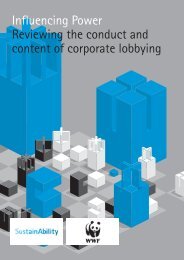
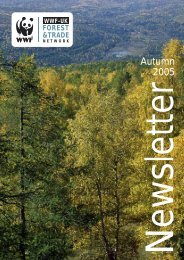

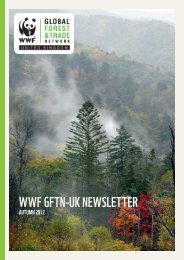
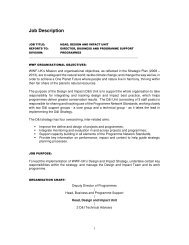
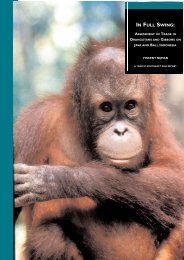
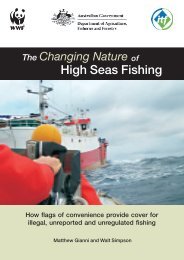
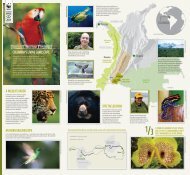
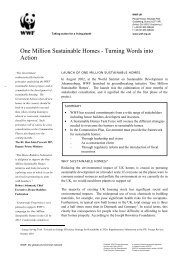
![[PDF] Causes for concern: chemicals and wildlife - WWF UK](https://img.yumpu.com/31929970/1/184x260/pdf-causes-for-concern-chemicals-and-wildlife-wwf-uk.jpg?quality=85)
